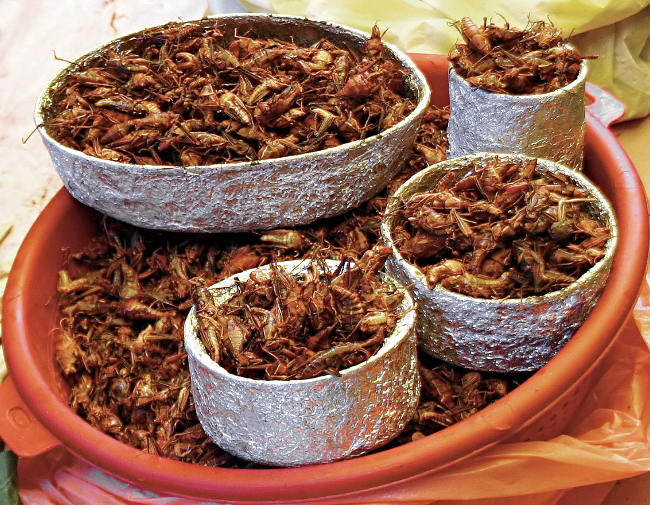Maybe you’ve see little cans of chocolate-covered ants or grasshoppers in the exotic food section of your grocery and thought to yourself, “Yuck—who eats that?” Insects may not come to mind when you think of superfoods. But they could be the next hot “alternative” protein. They’re low in fat and loaded with fiber.
You might be surprised to learn you may have been eating insects already. More than 30 companies are already using cricket flour in their products such as cookies and energy bars. And while eating insects is common in Latin America, southeast Asia and parts of Africa because they’re a cheaply available commodity, in the U.S. food items containing cricket flour, which is still expensive to produce, are being marketed as artisan products intended for adventurous foodies eager to try something before everyone else.
“Demand for food-grade insects is growing rapidly,” says the website for Tiny Farms, a Silicon Valley-based start-up “pioneering the industry production of insects.”
Currently, it admits, edible insects are a niche products with the cost of a pound of cricket flour ranging from $25-$45. But it says that’s due to lack of scale and it hopes to change that.
“Right now in February 2015,” said a recent post on the Tiny Farms blog “there are dozens of restaurants around the country experimenting with insects on their menus—from culinary hubs like San Francisco, Los Angeles and New York City to more conservatively palated Austin, Texas and Youngstown, Ohio. Food startups Exo, Chapul, Hopper Foods and Bitty Foods are ramping up production of their cricket flour energy bars and baked goods and growing their brick-and-mortar distribution networks in addition to serving up online sales. Exo’s bars are even slated to be included in a snack box served on JetBlue Airlines flights. Boston-based Six Foods is preparing to launch their cricket chips, and dozens more new companies are developing products, business plans and marketing strategies to serve edible insects to the Western masses.”

